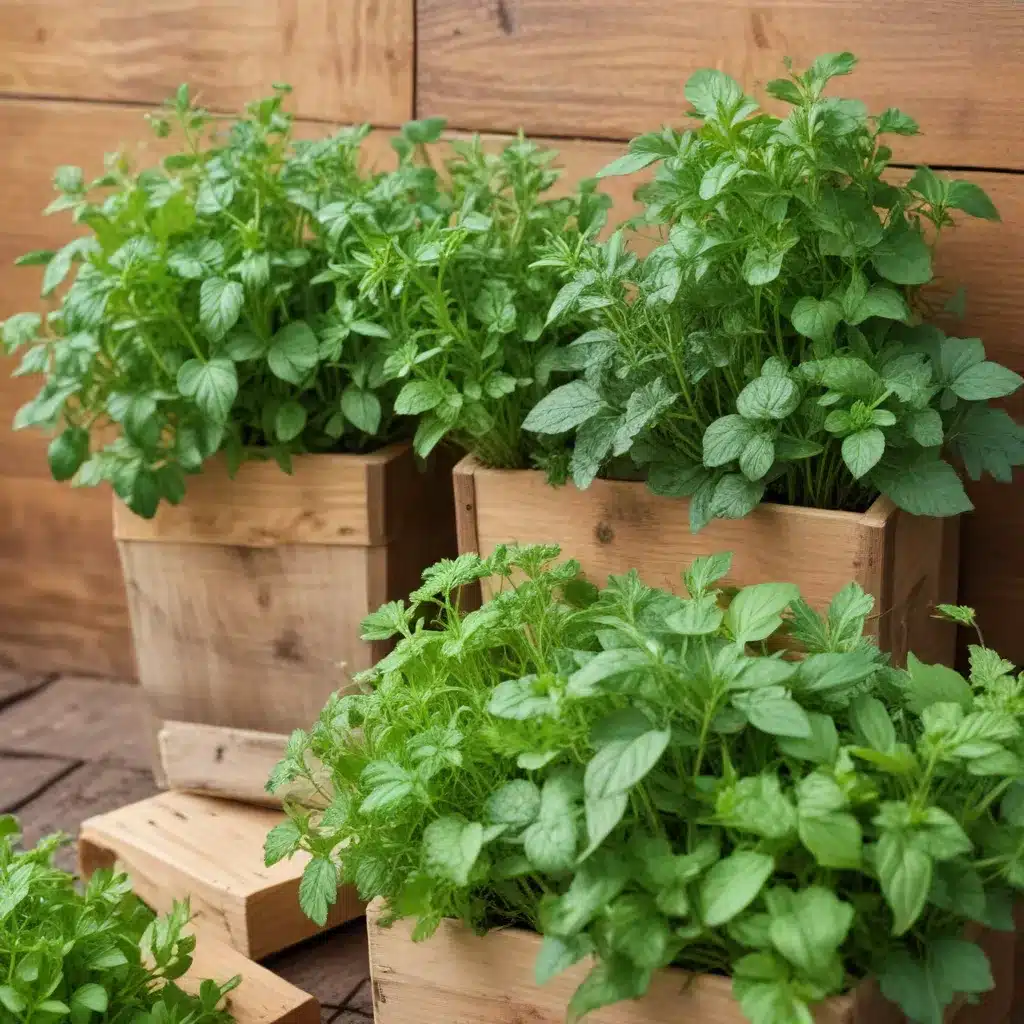
Herbs are the backbone of any well-stocked kitchen, elevating even the simplest dishes with their aromatic and flavorful properties. At Crooked Pines Farm, we believe that growing your own culinary herb garden is one of the most rewarding and easy-to-manage additions to your home. Whether you have a sprawling backyard or a cozy windowsill, herbs can thrive in a variety of settings, providing you with a bountiful and fragrant harvest all season long.
Herb Varieties and Characteristics
When it comes to culinary herbs, the options are vast and diverse. French thyme, with its pungent Vicks-like aroma, is a classic for meats, vegetables, and cheeses. Lemon thyme offers a bright, citrusy note that pairs beautifully with fish and poultry. Oregano-scented thyme lends its robust, oregano-like flavor to Italian and Middle Eastern dishes, while caraway thyme imparts a unique caraway seed taste, perfect for sauerkraut, breads, and vinegar-based dishes.
Beyond the thyme family, rosemary, sage, basil, parsley, chives, and mint are all essential herbs that should have a place in any well-rounded culinary herb garden. Each offers its own distinct flavor profile, from the piney, resinous notes of rosemary to the earthy, slightly peppery taste of sage. Basil’s sweet, aromatic leaves are a must-have for pesto and tomato-based dishes, while parsley’s bright, grassy character lends balance to a variety of savory preparations.
Herb Garden Design
When planning your culinary herb garden, consider the optimal growing conditions for each variety. Most herbs thrive in well-drained, gritty soil and full sun exposure, requiring at least six hours of direct sunlight per day. Group plants with similar watering needs together, as some, like mint and basil, prefer consistently moist soil, while others, such as rosemary and thyme, prefer a drier environment.
Spacing is also crucial. Allow enough room for each plant to reach its full size without becoming overcrowded. A good rule of thumb is to space herbs 12 to 18 inches apart, depending on their mature dimensions. Incorporate raised beds or containers if your in-ground planting area is limited, as this can improve drainage and accessibility.
Planting and Propagation
While starting herbs from seed can be a rewarding process, it often requires more time and patience than transplanting seedlings from a nursery or garden center. For first-time herb growers, purchasing small plants is generally the quickest and easiest path to a thriving culinary herb garden.
When transplanting, be sure to loosen the root ball gently and plant the seedlings at the same depth they were growing in their original containers. Water thoroughly, and continue to monitor soil moisture, adjusting your watering schedule as needed.
If you’re looking to expand your herb garden or share your bounty, vegetative propagation through stem cuttings is a simple and effective method. Simply snip 4-5 inch stem pieces, remove the lower leaves, and root them in a well-draining medium, such as clay-based cat litter or sand.
Herb Cultivation Practices
Consistent watering is crucial for most culinary herbs, as they are sensitive to both drought and oversaturation. Check the soil regularly, and water deeply when the top inch or two begins to dry out. Avoid getting water on the leaves, as this can promote fungal diseases.
Fertilize your herbs sparingly, as too much nitrogen can lead to an abundance of foliage at the expense of concentrated flavor. A balanced, time-release fertilizer applied at planting time is typically sufficient, as herbs generally thrive in leaner soil conditions.
Vigilance is key when it comes to pest and disease control. Monitor your plants regularly for signs of aphids, spider mites, or powdery mildew, and address any issues promptly with organic solutions. Promoting air circulation and avoiding overcrowding can also help deter many common herb-related problems.
Harvesting and Preservation
The best time to harvest your culinary herbs is in the morning, after the dew has dried but before the day’s heat sets in. Snip the leaves or stems just above a set of healthy, green growth, taking care not to remove more than a third of the plant at a time.
For long-term storage, drying is an excellent preservation method. Hang bunches of herbs upside down in a well-ventilated area, or lay the leaves flat on a screen or baking sheet. Once fully dried, store the herbs in airtight containers, away from direct light and heat.
Freezing is another option, particularly for tender herbs like basil, parsley, and chives. Chop the leaves, pack them into ice cube trays, and top with water or broth before freezing. The frozen herb cubes can then be easily added to soups, stews, and sauces throughout the year.
Herb Companion Planting
Herbs can be beneficial companions in the garden, deterring pests and enhancing the flavors of neighboring plants. Marigolds, for instance, can help repel nematodes and aphids, while nasturtiums attract beneficial insects that prey on common garden pests.
Basil is a particularly versatile companion plant, as its strong scent can help to confuse and deter aphids, whiteflies, and even tomato hornworms. Planting basil alongside your tomatoes can also intensify the sweetness and aroma of both crops.
Culinary Herb Versatility
The true joy of growing your own culinary herb garden lies in the endless ways you can incorporate the fresh, vibrant flavors into your cooking. From classic pesto and herb-roasted vegetables to infused vinegars and herbal teas, the possibilities are endless.
Experiment with flavor pairings, such as rosemary and lemon, or thyme and honey, to create unique and delightful dishes. Preserve the essence of your herbs by drying, freezing, or processing them into oils and pestos, ensuring you can enjoy their flavors long after the growing season has ended.
Ultimately, cultivating a culinary herb garden at Crooked Pines Farm is a rewarding and enriching experience, one that will provide you with a bountiful harvest of fresh, flavorful ingredients to elevate your home cooking. Whether you’re a seasoned gardener or just starting out, we encourage you to embrace the joys of growing your own herbs and discovering the endless ways they can transform your meals.


